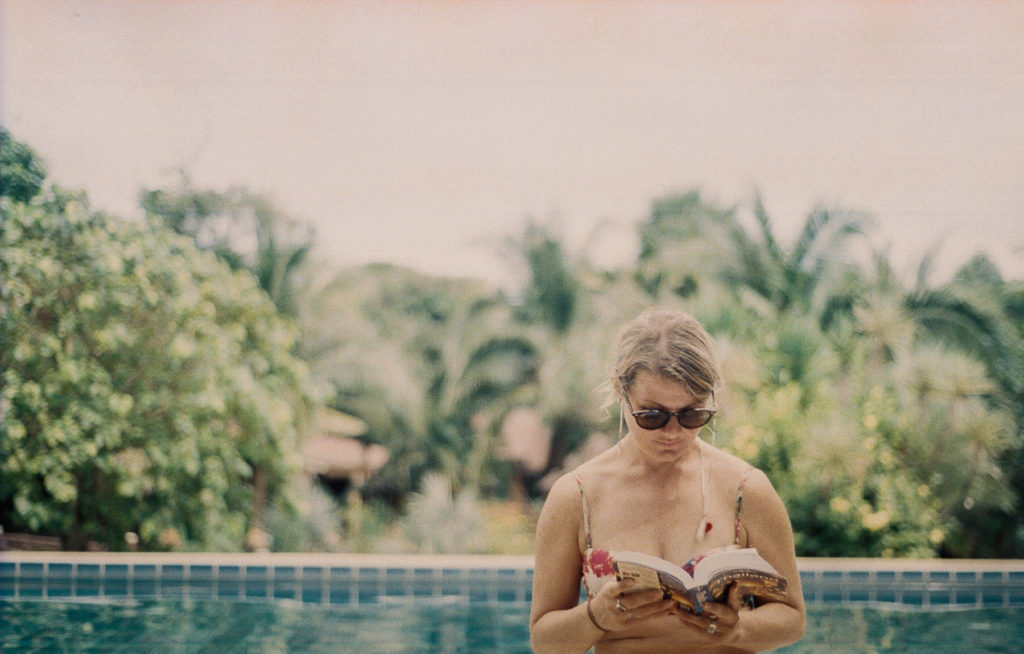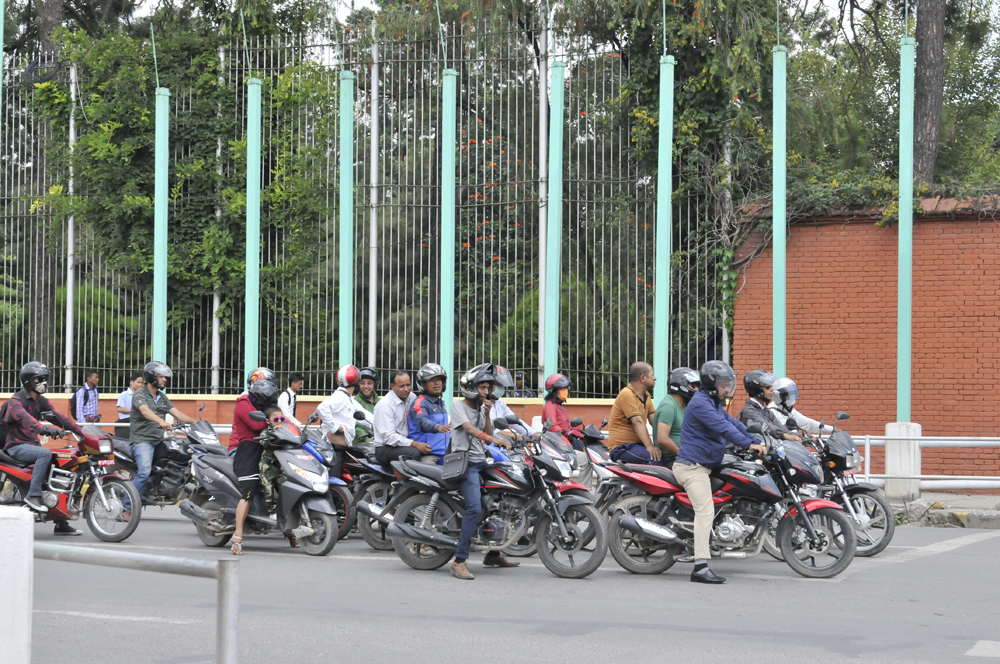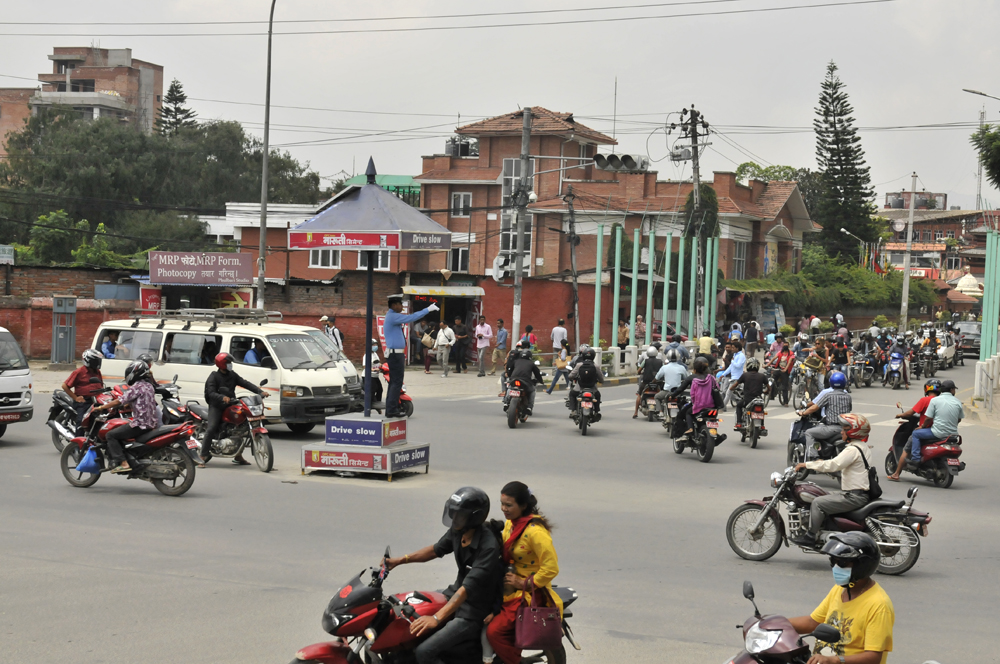

 During my adventures, I’m often captivated by the natural beauty I witness. I’ve felt the sudden and overwhelming need to hug trees, lay down in the dirt, and literally salute the sun, but every once in a while there is a place that leaves me in complete aw. A place so magical that I know I will visit again because I must show someone else the wonder. Bua Tong is that place. All afternoon I felt dumbstruck. How is it possible that this type of beauty exists in nature? I felt like I was transported to Neverland, there was just no way that what I was seeing and experiencing was real. Was I asleep? Did someone slip me acid? Am I in a storybook? Nope, the earth is really this amazing and I had the opportunity to experience it. Let me attempt at explaining what I experienced at Bua Tong although surely no words or images will come close.
During my adventures, I’m often captivated by the natural beauty I witness. I’ve felt the sudden and overwhelming need to hug trees, lay down in the dirt, and literally salute the sun, but every once in a while there is a place that leaves me in complete aw. A place so magical that I know I will visit again because I must show someone else the wonder. Bua Tong is that place. All afternoon I felt dumbstruck. How is it possible that this type of beauty exists in nature? I felt like I was transported to Neverland, there was just no way that what I was seeing and experiencing was real. Was I asleep? Did someone slip me acid? Am I in a storybook? Nope, the earth is really this amazing and I had the opportunity to experience it. Let me attempt at explaining what I experienced at Bua Tong although surely no words or images will come close.
https://www.youtube.com/watch?v=bhF3n5V6mWM
What is Bua Tong, the sticky waterfall? As unbelievable as it sounds, it’s just that. It’s sticky not slick, so one is able to walk quite easily up and down the slope of it even with water rushing by. What makes it this way? An abundance of calcium carbonate runoff. Calcium carbonate is commonly found in Limestone, which is what lies under the thick deposits that you see covering the falls. Even though I briefly researched the waterfall (I didn’t look at any photos) before visiting, it didn’t prepare me for the experience.


Walking up a waterfall. How absurd. That’s what I thought while reading about Bua Tong. Once I arrived, I stripped down and slathered on sunscreen all the while keeping my eyes on the handful of people walking up the falls. They were making it look so easy, but they looked athletic and young, surely it was harder than it appeared. Then it was time to try it for myself, I braced myself, felt my core tighten and prepared to face plant as I took my first step. Complete shock and amazement washed over me as I took one step and then another upwards through the rushing water. With my mouth hanging open and my eyes wide, I looked around at my friends, ‘are you seeing this!?,’ is what I’m sure my expression read. Pure bliss and bewilderment followed me around the rest of the afternoon and I climbed up and down, up and down, all around Bua Tong. The mineral deposits look like white, cloud-like sponges and actually feel similar though a little bit harder and slightly pricky, the surface even gives slightly under a firm touch. There were a few patches that were slick, but it is because the calcium carbonate was covered with a mossy slime. These spots are easy to see and avoid.

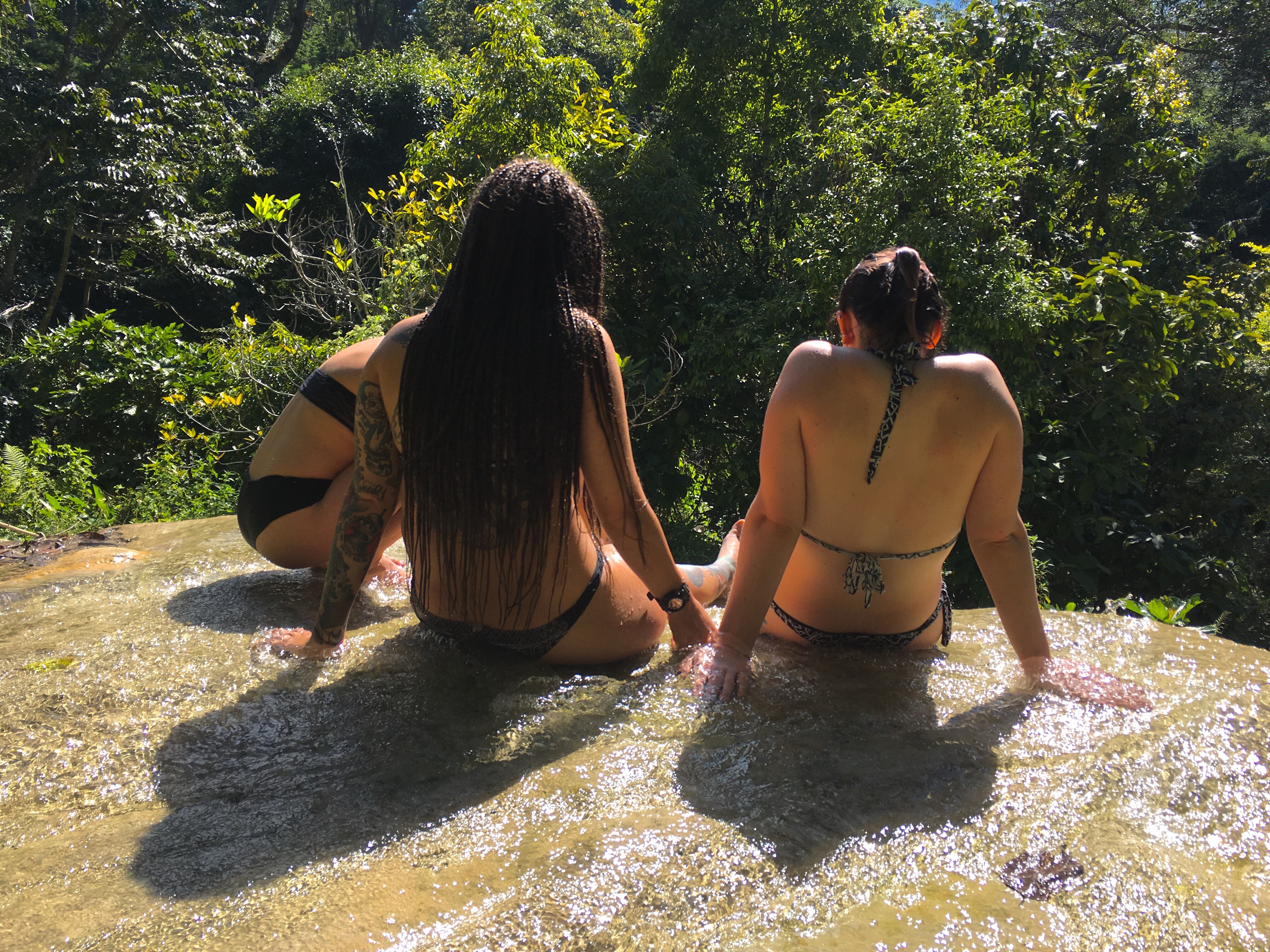

In the company of only about two dozen other travelers, Bua Tong had truly felt like one of the most enchanting places I’ve ever visited. Usually while traveling you’re forced to share the magic, but here it was all our own. As I looked around, I saw that most people had carved out a little space on the waterfall’s slope to sit in the sun and marvel at where their life had brought them. It was only a few minutes later that I joined my best friend, Natasha, on a sunny log in the middle of the rushing current to simply be. As I lay meditating, tiny tickles of what I thought were mosquitoes kept dragging me back to the outer world. It was in the midst of one of these tickling sensations that I opened my eyes and realized, it wasn’t mosquitos at all, but dozens of colorful butterflies. I closed my eyes again, determined to be at peace with each coming sensation. As I reflected on my weeks in Thailand, the friends in my company, my path in general, I had the overwhelming feeling of gratitude that materialized as a single teardrop from each eye. Life is beautiful. There is magic everywhere and I have so much to be grateful for, sometimes it takes a trip to never never land to remind you that every single day is a gift to be cherished and spent wisely, whether you’re climbing a sticky waterfall or navigating your work week.



Are you ready for a spiritual awakening? Kidding, but here are more details on how to reach Bua Tong and what to experience while you’re there.
What to pack:
- Money for gas and snacks
- Bathing suit
- Sunscreen
- Sunglasses
- Book
- Camera
- Dry bag/waterproof bag if you have one
- Long sleeve or sweatshirt (the ride home will be a little chilly)
How to get there:
Located over an hour outside of Chiang Mai, Bua Tong isn’t on the beaten tourist track, but still worth a visit. We rented motorbikes for the duration of our stay in Chiang Mai, which costs roughly 200-300b per day. I personally enjoy driving and navigating through crazy Thai traffic, but to some this may seem dangerous or unappealing. If you are in the latter group, you can ask your guesthouse or a tour operator for a songtaue to Bua Tong, but because it’s so far outside the city, it will be kinda pricy for Thai travel standards. I would find a cool crew the day before and convince them that they need to join you on this quest, that will surely reduce the price of the songtaue. If you’re in the former and you’re down to drive a motorbike, download either the app maps.me or google maps and download the northern Thailand map, while you have wifi that way you’ll have to problem navigating to Bua Tong. It really isn’t too tough and once you are about twenty minutes outside Chiang Mai, the traffic really slows down. I think driving the motorbikes to and from Bua Tong really added to the adventure and it was nice exploring the falls at our own pace instead of knowing a songtaue driver was waiting around for us.
What to explore :
Obviously you came for the sticky waterfall. If I were you, I’d take the stairs all the way to the bottom, stash your bag on a log (most people left their bags near the bottom of the falls unattended, I did the same and didn’t worry about my $3,000+ camera once, but do what feels comfortable to you) and start the climb up. Find a nice space to sun yourself midway or hike all the way to the top in one go. Now it’s time to hike down. Slightly scary, but equally easy. There are several ropes along the way to offer support in tricky areas and ensure your decent is safe. Don’t you dare chicken out and take the stairs back down. You only live once. Once back at the bottom, continue a little further than the bag drop area where the stairs end. You’ll find another smaller waterfall with a shallow plunge pool at the bottom. Submerge yourself and dig your toes down into the soft, glittery sand, you did it.

After you’ve had your fill of the waterfall, hike back up to the tip and explore the natural seven colored fountain. Even if you’re famished and tired (we were both) you can make it to the fountain. It’s less than a five minute walk and it’s a wooden boardwalk the entire way. You’ll be amazed at how insanely clear the water is and you’ll enjoy leafy jungle views on the way to and from.
There’s also another short hike depicted on a large wooden sign near the entrance to the fountain trail, we decided against it only because we were sure to die of hunger (or morph into hangry demons) at any moment. We contemplated buying a snack from the small restaurant on site and then completing the hike, but we wanted to have time to stop on the road for a late lunch and return to Chiang Mai before dark.



Where to eat & stay:
On the way back to Chiang Mai, we stopped at the loveliest little guesthouse and restaurant. If we had more time, we certainly would have stayed the night. The guest house is called Howiman or Horwiman. You pull off the road across from Lhongkhoa Resort and head straight down the dirt hill, you’ll immediately see a grouping of dark wooden buildings on the left and you’ll probably hear a yapping little dog, and you’ll know you’re in the right place. If we could have stayed and drank our Chiangs in frosty mugs all evening we totally would have. Next time I visit Bua Tong I will.


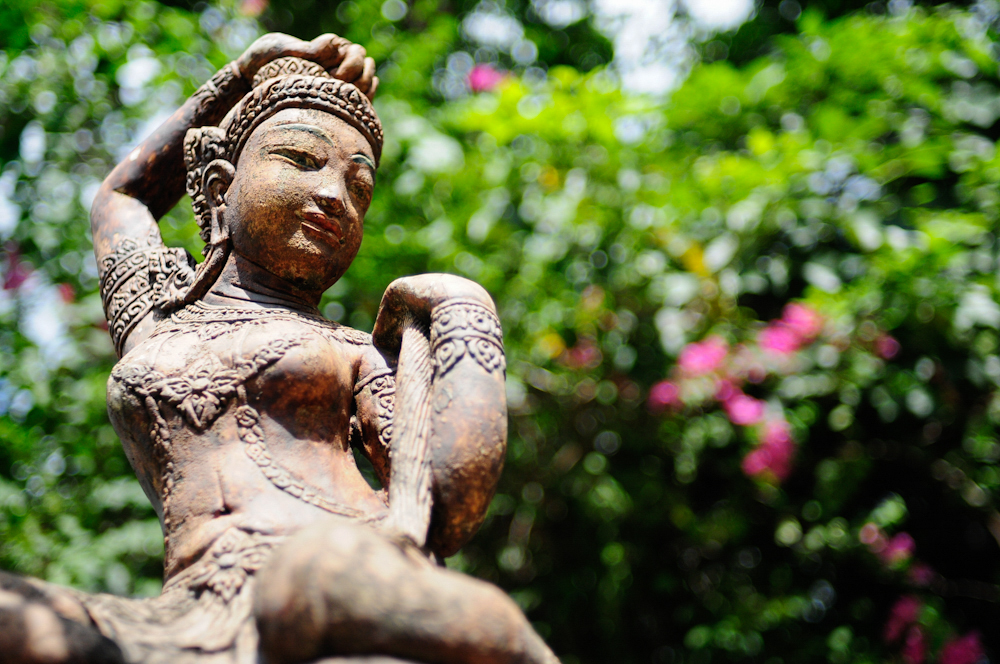







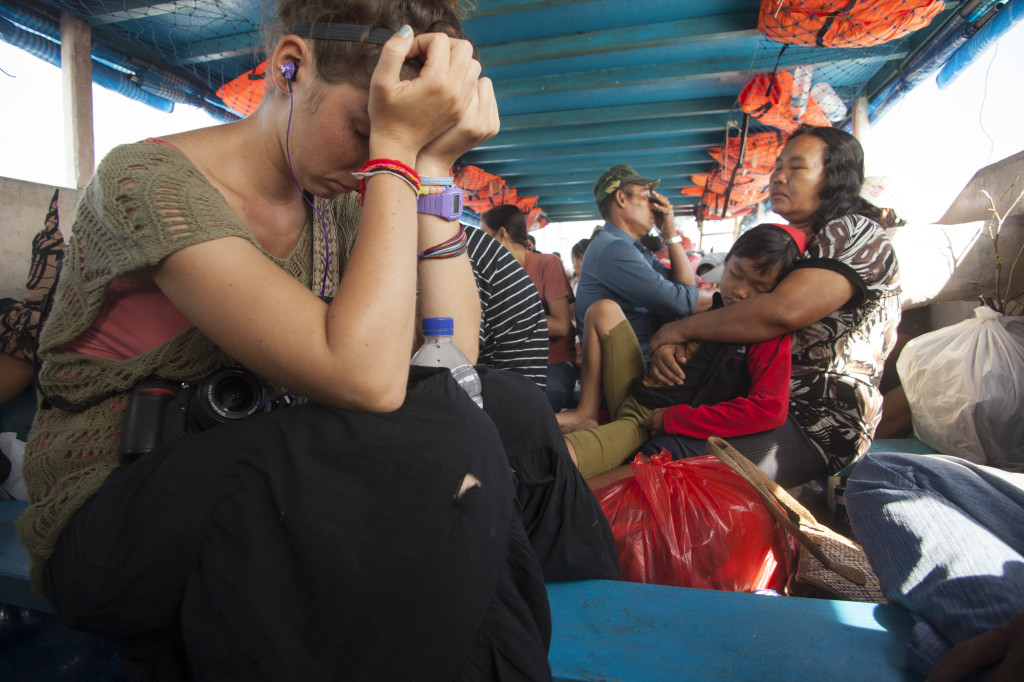
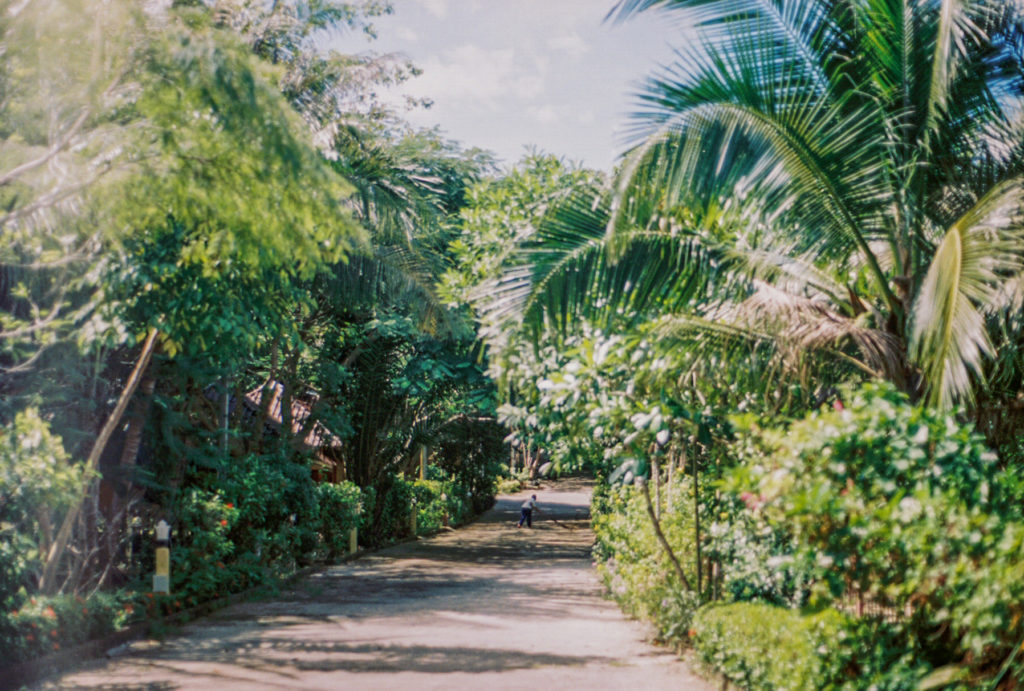



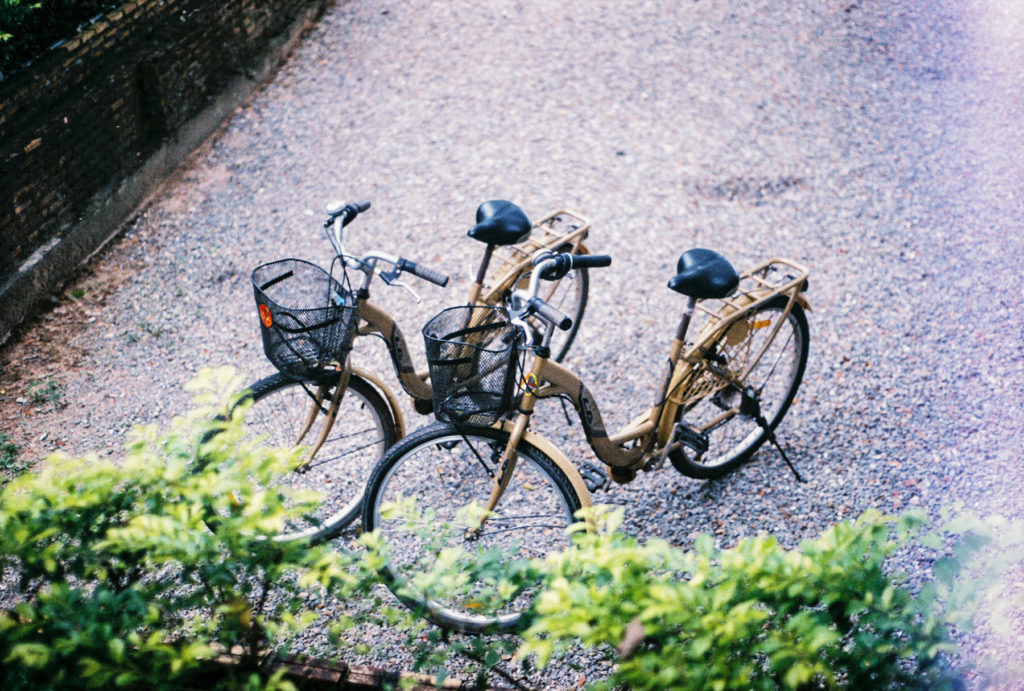

 As an
As an 
